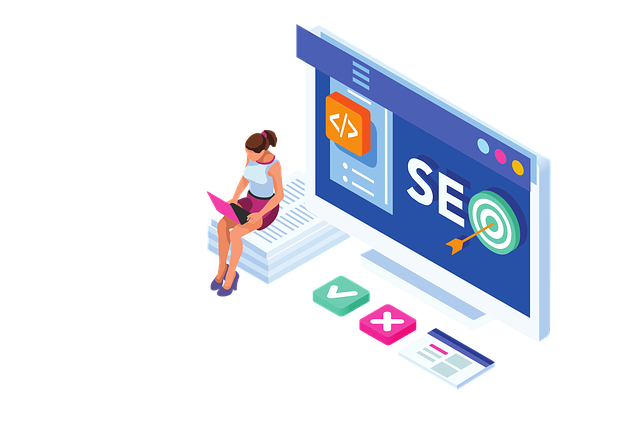Enhancing Customer Experiences
You can’t really understate just how important making our customers feel special is to our business mojo. Two big players in this game are top-notch customer service and shelling out personalized experiences that feel authentic rather than robotic.
Value of Customer Service
What I’ve seen in my time is that those businesses who treat customer service like the crown jewels—and not just another line on the expense report—see their profits doing a happy dance. When customers have interactions that feel good, they’re likely to stick around longer and spend more green. The numbers don’t lie: a totally hyped customer drums up 2.6 times more revenue than one who’s just “meh,” and 14 times more than someone who’s downright disappointed.
| Customer Satisfaction Level | Revenue Boost |
|---|---|
| Totally Hyped | 2.6x |
| “Meh” Level | 1x |
| Downright Disappointed | 0.14x |
Forcing ourselves to see customer service as something worth the investment is a surefire way to forge lifelong connections.
Impact of Poor Personalization
Now, let’s talk about the oopsies of bad personalization. It’s like giving someone a birthday gift with another name on it—it’s just cringy and unforgettable in all the wrong ways. A little nugget from a 2021 study by McKinsey & Company shows 72% of folks want businesses to treat them like actual humans, with unique quirks and all.
Botching this area can send customers packing. 63% have said they’ll hit the road if brands can’t offer something that feels like it was cooked up just for them (Storyly).
| Personalized Experience | Chances of Sticking Around |
|---|---|
| Seen as Human | 72% Expect Real Connections |
| Blah Experience | 63% Walk Away |
Honing the art of personalization keeps customers coming back like regular diners at your favorite joint. It’s clear to me that stepping up both our service game and making those interactions personal can turn customers into loyal fans while giving our revenue a good kick. If you’re in for some more exploration, check out customer journey mapping and how customer experience strategies can transform things for you too.
Employee Engagement and Customer Loyalty
Prioritizing Employee Satisfaction
In my experience, putting employees at the forefront is a game-changer for boosting how customers feel about your business. As the savvy Richard Branson put it, it’s all about employees first. When you nurture your team, they love their jobs and, in turn, make customers love your business. It’s this kind of thinking that ties employee enthusiasm to customer devotion. Studies show that businesses whose employees are happy see a 10% bump in customer loyalty.
Happy employees are like a secret sauce; they drive better service, which keeps customers coming back. Get in the habit of checking in, applauding wins, and creating a workplace that’s supportive enough to boost their satisfaction.
Technologies for Employee Development
Dive into technology to ramp up your employee development and see how it spices up your customer interactions. There are tools out there that gather insights and keep employee info all in one place, supercharging team effectiveness. These tools zero in on gaps and help make sure your crew has what they need to shine in their roles (Oracle).
Artificial intelligence plays a neat role here too, arming support teams with customer insights that speed up decision-making and enhance the experience customers crave (Forbes).
| Technology | Benefits |
|---|---|
| Employee Engagement Platforms | Aggregate feedback, monitor what’s working, and boost morale |
| AI Customer Insights | Speed up decisions and tweak interactions to fit each customer |
| Learning Management Systems (LMS) | Keep learning fresh and skills sharp |
Using these tech tools builds a team that’s not just skilled but also revved up to give customers those special, personal experiences. By making employee satisfaction your mission and equipping them with the technology to grow, I can be sure my team is ready to meet and wow customers, building loyalty and excitement along the way. For more reading, you might want to check out ways to enhance customer experience training and dive into customer experience management techniques that’ll back these efforts up.
The Importance of Personalization
What Customers Really Want
I’ve been paying attention, and it’s clear that personalization has shifted from a nice bonus to a must-have. Folks out there want experiences that feel like they’re made just for them. Adobe Commerce has put out some numbers showing 67% of shoppers crave those personalized offers that match their buying habits, whether they’re clicking ‘buy’ online or picking up something in a store .
Getting this stuff right is key to making folks happy. When businesses nail this, it leads to satisfied customers. How do they do it? By crafting interactions that matter every time someone connects with them. This could be anything from suggesting products that fit like a glove to sending emails that hit home.
| What Customers Want | Percentage |
|---|---|
| Personalized Offers | 67% |
| Likely to Engage | 80% |
Why Personalized Content Rules
When I bring personalized messages and suggestions into the mix, the results are pretty impressive compared to the usual generic stuff. The numbers back it up too—80% of people are more likely to go with businesses that take the time to customize experiences just for them (Xerago).
These special touches help build solid relationships between brands and customers, turning casual buyers into loyal fans. When you keep giving people what they want, they’re less likely to jump ship to another brand. It’s a win-win, since it not only boosts loyalty but also protects the bottom line in the long run.
| Personalization Perks | Effect |
|---|---|
| More Business | 80% likelihood |
| Boosted Conversion Rates | Definitely goes up |
| Better Customer Loyalty | They stick around |
By focusing on personalization, I can make sure I meet what customers expect and enjoy the perks that come with it. Getting personal with customers doesn’t just make them want to come back—it puts my business ahead in a sea of competition. Check out our other reads on customer experience management and customer experience personalization to find out more about making customer interactions top-notch.
Strategies for Personalization
Making sure customers feel like they belong is the secret sauce for good vibes and longer relationships. When you talk to them using tailored messages and smart customer segmentation, your audience feels like you’re speaking right to them.
Personalized Messaging
I’ve discovered that giving a personal touch to messages is a game-changer for businesses. Imagine, 72% of folks only pay attention when things are made for them. Focus here, and you don’t just make them happier—you keep them sticking around. That’s why a big chunk, 75% of business chiefs, swear that getting personal is key to digital success, and over half of customers nod in agreement when asked if it ups their satisfaction (Storyly).
Here’s the game plan for sending personalized notes:
- Use their names like you’ve known them forever.
- Play back their past likes and dislikes in your content.
- Serve up offers that hit the bullseye of their buying history.
These moves make your customers feel seen and heard, like they’re not just another number.
Customer Segmentation Techniques
Getting personal means cracking the code on customer segmentation. By digging into different data pools, I serve targeted content and tailor experiences for each unique crowd. This involves peeking into facts like age and shopping habits, along with how they live their lives or what they think (LinkedIn).
Here’s how I break it down:
| Data Type | What It Includes |
|---|---|
| Demographic | Basics like age, gender, zip code, and salary. |
| Behavioral | Their buying journey, what they shop for, and site activity. |
| Psychographic | Their hobbies, beliefs, and way of living. |
| Transactional | Shopping frequency, average spend, and loyalty levels. |
| Feedback | What they say in reviews, surveys, or satisfaction scores. |
And to sharpen things up, I suggest diving into tests like A/B or multivariate. These let me assess which personalized pitches work magic with different groups. Plus, scoring how personal touches hit the mark helps prioritize what really matters (LinkedIn).
With a focus on personalized chat and customer segment smarts, I can craft an experience that doesn’t just hit the bar—it raises it. For more on polishing customer paths, check out stuff like customer journey mapping and customer experience management.
Hyper-Personalization in Marketing
Cracking the code of a truly customized customer experience is like unveiling a treasure chest of surprise benefits, although it’s not without its head-scratchers. I’ve seen firsthand that steering clear of these hiccups means getting the planning and strategy just right—especially when it comes down to tricky stuff like data privacy and the techy gadgets that make it all work.
Challenges in Implementation
Diving into hyper-personalization isn’t all smooth sailing. Here’s the scoop on what businesses usually trip over:
Wrapping Your Head Around Data Privacy Rules: Laws like GDPR and CCPA are there to keep everyone honest. Companies need to play by these rules to keep customers sweet and duck those not-so-nice fines. Blow it, and you’re looking at some hefty smackdowns.
Wrangling Technological Twists: Bringing new tech on board for personalized marketing is kinda like changing a tire on a moving car—tricky stuff. Many folks hit walls trying to fit newfangled strategies into their old-school systems.
Getting Data in Ship Shape: Print-perfect data is key when you want a full picture of the customer. Messy data equals messy personalization, which equals, well, no good.
Winning Customer Trust: Since personalization leans heavily on folks’ personal info, it’s all about building that trust bridge. Letting people know exactly how you’ll treat their data can really help seal the deal.
Keeping Things Slick and Scalable: As the customer crowd gets bigger, making sure each experience feels just-right is no small feat. Companies gotta beef up their tech backbone to keep pace with the growing demand.
| Gotcha | What’s Going On |
|---|---|
| Data Privacy Rules | Playing nice with laws like GDPR and CCPA. |
| Tech Twists | Fitting new tech into what’s already there. |
| Good Data Habits | Molding data from all corners into one clean view. |
| Customer Confidence | Being upfront with customers about their data. |
| Scalable Strategy | Tweaking efforts to stay efficient as you expand. |
Data Privacy and Compliance
Tackling data privacy is your bread and butter when aiming for killer hyper-personalization. You’ve got to toe the line on regulations to keep the customer faith strong. Clear chat about how you’re collecting, storing, and using folks’ data goes a long way in sidestepping any nasty surprises.
To stay out of hot water, businesses should:
- Make sure data protection opens maximum coverage to customer info.
- Keep privacy policies fresh and reflect what’s legal and legit with how the company’s rolling.
- Train up the team on data do’s and don’ts so everyone’s rowing in the same direction.
Investing in tech that’s smart as a whip is the ace in the hole for making personalization a reality. This gizmo can chew through piles of data in real time, helping businesses pivot and meet customer whims almost before they know they have them.
By tackling these challenges, I aim to craft a customer journey that not only gets the nod but also wows the crowd.
Retail Success through Personalization
Personalization in Retail
While digging into how personal touches can shape the retail world, I stumbled upon something interesting: taking the time to get to know your customers can work wonders for your business. Personalization isn’t just a fancy buzzword—it’s about making every interaction count. Imagine walking into a store and feeling like it was set up just for you. That’s the kind of magic we’re talking about here.
Sephora, for instance, is totally nailing it with their rewards program. An impressive 80% of their transactions come from fiercely loyal customers among their 25 million members. It’s like having a fan club that keeps coming back for more, which clearly says a lot about how honing in on personalization pays off (McKinsey).
| Cool Retail Moves | What Happened Because of Them |
|---|---|
| Loyalty love affair (Sephora’s way) | Most transactions are loyal fan sourced |
| Build your own kicks (Nike’s approach) | Customers are loving it and coming back |
Impact on Sales and Loyalty
More than candy for their soul, personalization gives your sales a leg up. Research shows that personalized experiences jazz up grocery sales 1-2%, and specialty stores see even bigger wins. When you make customers feel seen and heard, they not only stick around but get more generous with their purchases.
Businesses that do the personalization dance right see a 20% jump in customer happiness and a sales conversion boost between 10% to 15% (McKinsey). Nike, for example, wins big by not just showing options but crafting a seamless shopping vibe across channels, proving it’s not just a passing fad. It’s the secret sauce to keep everyone coming back for more.
| How It’s Measured | How Much It’s Better |
|---|---|
| Customer happiness | Up by 20% |
| Sales conversions | Lifted by 10 – 15% |
| Worker enthusiasm | Increased by 20 – 30% |
Seeing companies like Nike rocking personalized interactions lights up the path for others seeking retail stardom. Personalization isn’t a passing trend; it’s your ticket to building bonds that keep your business thriving. Need more ideas on amping up customer journeys? Check out our deep dives at customer experience management and customer experience in retail.
Implementing Personalization Strategies
Getting personal with customers in today’s market is a big deal. I know using tech and AI is a game-changer for crafting those one-on-one experiences.
Leveraging Technology
Tech is like my secret weapon for making customers feel special. It helps gather all sorts of customer data, which I can use to tailor how I connect with them. I’ve got digital tools in my arsenal that let me keep tabs on what customers like and do at any point in their journey with me.
Take customer relationship management (CRM) systems for instance. They pull all the data into one place, making it easier to chat with customers and follow up. Toss in some other data sources, and I can get the insight to make my messages hit home. Here’s a quick snapshot of what tech does for personalizing those experiences:
| Type of Tech | Why It Rocks |
|---|---|
| CRM Systems | Puts all customer info in one spot, boosting communication |
| Analytics Tools | Digs into customer behavior and likes |
| Marketing Automation | Changes messages and campaigns based on nifty insights |
| Data Visualization Tools | Makes data easy to read and helps with decision making |
When I’m upping the digital customer experience, what I’m really doing is ensuring every interaction across different platforms is smooth as silk. An omnichannel approach makes sure the experience is consistent for everyone, whether they’re on a phone, computer, or in the shop.
AI for Enhanced Customer Experiences
AI is like the not-so-secret sauce for making experiences even more personal. It sifts through mountains of data to spot patterns and guess what customers are going to do, letting me tweak my marketing instantly.
For example, AI-driven chatbots can jump in anytime and answer simple questions, tailoring their responses based on what they know from past chats. This not only makes customers happy but frees up time to solve more complicated issues. Think about this: 52% of people say personalization ups their happiness levels (Storyly).
Having AI on my side also means I can give out top-notch recommendations based on someone’s personal likes. In retail, this means when I use AI, it helps create better personalized offers, which boosts how often customers come back and how loyal they are. Businesses can see a 20% uptick in satisfaction and snag a 10-15% lift in sales conversions with sharp personalization tactics (McKinsey).
Wrapping things up, focusing on tech and AI gives me the opportunity to create deeper emotional connections with my customers through personalization. It’s not just about upping their satisfaction; it’s about earning their loyalty in the long haul, which is key to staying ahead. For more on making personalized experiences, check out our resources on customer experience personalization and customer experience management.




















